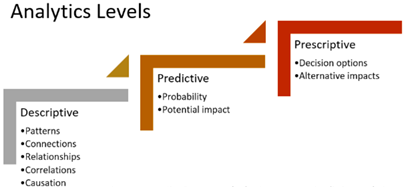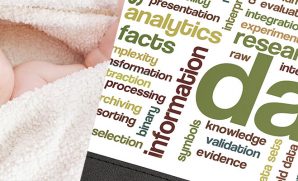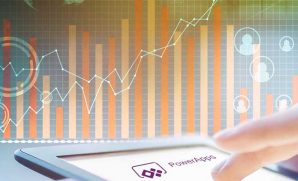If predictive analytics is placed at the heart of an automated decision-making process, then it must be approached in a controlled and systematic way. Building a decision-making infrastructure based on predictive analytics is just like any other sort of project, like setting up an IT data center, refitting a factory or restructuring an organization
Let us understand the different types of analytics used in many organizations today.
Descriptive Analytics uses data aggregation and mining for providing insights into the past and answers: “What has happened?” These are the most common reports that organizations generate. These reports show patterns of what happened in the past and allow the analyst to make their predictions.
Predictive Analytics makes use of statistical models and forecasting techniques to understand the future and answers: “What could happen?”
Prescriptive Analytics makes use of optimization and simulation algorithms to advice on possible outcomes and answers: “What should we do?”

Predictive analytics not only about what’s happening, but it can also predict what WILL happen in the future, which is precious stuff. Rather than just explaining the who, what, where, when; predictive analytics PREDICT the best course of action that will generate the most optimal return based on an algorithm, such as a regression equation.
Predictive analytics prime objective is to analyze data and manipulating variables to extract forecasting capabilities from existing data. Predictive analytics techniques rely on variables that can be measured, manipulating metrics to predict future behavior or outcomes given various quantifiable approaches. Predictive analytics models combine multiple predictors, or quantifiable variables, into a predictive model. This approach allows for the collection of data and subsequent formulation of a statistical model, to which additional data can be added as it becomes available.
The prediction process involves the following steps:
- Problem Identification – Have a Predictive that needs an answer. Who to target? Which coupon? What medium of communication. Example: What is the probability that the VIP Customers are likely to renew if the price was increased by $4?
- Determining the Outcome and Predictors – Renewal patterns using Customer data, Store and Product attributes like pricing and the past membership renewals.
- Explore data and segregate data – This involves exploring the data and separating the data, cleaning the data for outliers.
- Test the models – Assuming that through exploration we find that there is a strong relationship between Customer’s age and the income levels for renewals; we can plot a scatter plot using historical data and then based on a probability of renewals; we can determine the membership price change.
- Applying models to an identified population to predict behavior and evaluate – Sometimes we can use the historical data to test the models to an already known result. For example, taking the 2014 and 2015 data to test for a model for 2016 outcome, for which we already know the outcome.
Organizations involved in the Predictive Process:
- The Problem needs to be identified by the Business users as they see a need.
- Once the problems are identified, then the IT Organization or the business needs to where to look for the data and\or how to integrate the data for an integrated exploration. Most companies have a data warehouse or big data integration through Hadoop.
- Exploration Tools such as Tableau, QlikView, and Lumira can be used to explore and segregate data by the Business users as well IT resources depending on the complexity of the data
- For Models, SAP has a Predictive Analytics Library as well as the ability to integrate with R library to utilize pre-existing models or even to tweak them a little to suit the desired outcome.
- Some examples of how Predictive Analytics can be used are:
- Market Basket Analysis
- Customer Segmentation
- Stock-Outs Elimination
- Customer Profitability
- Response Modeling
- Loyalty Program / Churn Analysis
- Pricing / Promotion Planning
- Inventory Optimization
Predictive analytics allows organizations to become proactive, and forward-looking, anticipating outcomes and behaviors based on data and not on any assumptions. You need to plan what you are going to do, undertake feasibility work, understand the costs and benefits and risks and issues, and have someone overseeing the whole show to ensure that it delivers what was promised on time and to budget.
Get more insights on YASH Data Science & Analytics services. Visit here


















